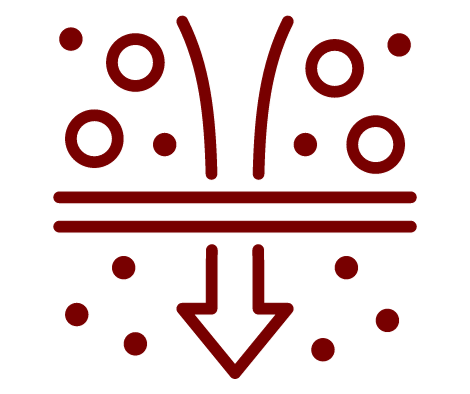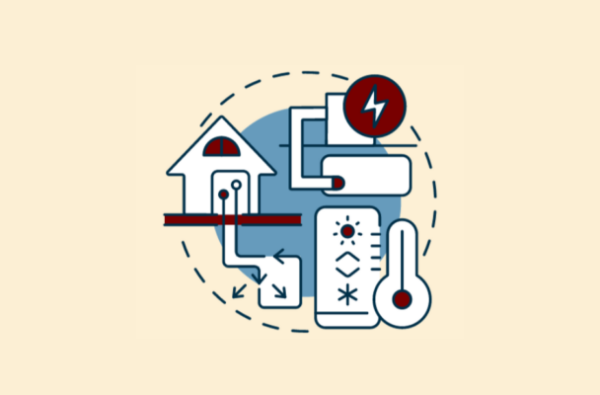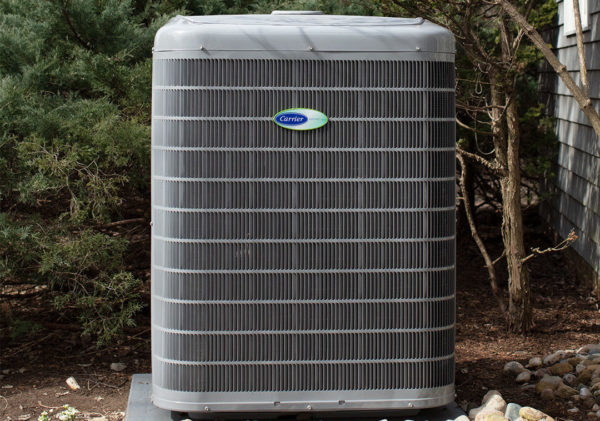Choosing a heat pump can mean a lot more than just comfort for your home or business. While the invention of heat pumps date back to 1856, the incredible technological advancements they have undergone within the last couple of decades has made this heating and cooling system increasingly more popular. The highly-efficient, environmentally friendly benefits are a draw for many Massachusetts homeowners.
In a fossil fuel-dominated world, technology such as the heat pump remains a mystery to many. However, the science behind how heat pumps provide a greener form of climate control without compromising indoor comfort is truly fascinating. For many appliances, electricity or fossil fuels are used to generate heat. The amount of energy put through the HVAC system (in the form of electricity, oil, or gas) is the same amount created as heat. However, when electricity is put into a heat pump, something incredible happens: The electricity is used to gather heat and move it around. To further clarify, if you had a system that operated solely on electricity and is operating at 100% efficiency, let’s use a space heater as an example, a heat pump would be able to gather three to four (or more) times more heat throughout a home using the same amount of electricity as the space heater. It’s important to note, too, that 100% efficiency for most traditional systems is rarely found, making the efficiency of the heat pump all the more incredible.
Here’s how this seemingly impossible feat is possible:
Refrigerant
 The refrigerant takes center stage in the heat pump’s operation. None of the heat pump’s functions would be possible without it. Refrigerant is unique due to its extremely low boiling and freezing points. For perspective, while the boiling point of water is 212°F, the boiling point of refrigerant is generally around -15°F. Additionally, refrigerant doesn’t freeze until temperatures are significantly below the coldest outdoor temperature ever recorded. There is a common misconception that heat pumps don’t operate as well as other systems do in the cold; however, the widespread use of the refrigerant R-410A, which has a lower boiling point than its predecessors (primarily R-22), has allowed for heat pumps to absorb more heat despite cold outdoor temperatures. Regarding this, if you’re considering purchasing a heat pump for your home or business, correctly sizing the unit is critical for maintaining comfort in colder temperatures and overall efficiency.
The refrigerant takes center stage in the heat pump’s operation. None of the heat pump’s functions would be possible without it. Refrigerant is unique due to its extremely low boiling and freezing points. For perspective, while the boiling point of water is 212°F, the boiling point of refrigerant is generally around -15°F. Additionally, refrigerant doesn’t freeze until temperatures are significantly below the coldest outdoor temperature ever recorded. There is a common misconception that heat pumps don’t operate as well as other systems do in the cold; however, the widespread use of the refrigerant R-410A, which has a lower boiling point than its predecessors (primarily R-22), has allowed for heat pumps to absorb more heat despite cold outdoor temperatures. Regarding this, if you’re considering purchasing a heat pump for your home or business, correctly sizing the unit is critical for maintaining comfort in colder temperatures and overall efficiency.
The Refrigeration Cycle
The refrigerant moves through the system in a process known as the refrigeration cycle. Simply put, this process moves heat from one location to another. While the inner workings of an HVAC system may seem like an obscure science, they are remarkably simple. In fact, many terms from the water cycle taught in elementary school are applicable here. Let’s break down the cycle:
Step One: Evaporation

The outdoor unit contains a component called a heat exchanger, which uses the refrigerant to absorb heat from the outdoor air (or sometimes the ground, as in geothermal heat pumps). When electricity starts this process, the refrigerant passes through the evaporator coil, where it boils and transforms from a liquid into a gas.
Step Two: Compression

Now in a gaseous form, the refrigerant’s temperature and pressure are further increased by the heat pump’s compressor, which decreases its volume. Once compressed, the refrigerant moves to the next step with a temperature above that of the indoor space.
Step Three: Condensation

The heated and pressurized gas travels through the indoor system, reaching another heat exchanger and a condenser coil. Here, the gas condenses back into a liquid, releasing its heat into the indoor air to warm the space. The hot gaseous refrigerant is naturally cooled as it transfers heat to the room, aided by a fan. During this process, the refrigerant returns to its original liquid state.
Step Four: Expansion

The refrigerant has now adjusted the indoor air temperature to that of the thermostat and achieved its goal, but the process isn’t entirely over. Now that the refrigerant is a liquid again, it must pass through an expansion valve to reduce its pressure and cool down further. This step is essential because the refrigerant needs to be at a low enough temperature to absorb more heat during the next cycle.
What about heat pumps that cool?

One of the most enticing features of heat pumps is their ability to both heat and cool. When in cooling mode, the refrigerant absorbs heat from inside the building rather than from the outside, essentially reversing the process.
What else should you know?
Now that you’re familiar with this incredible technology that allows for highly efficient HVAC systems, saving you money on energy bills while also contributing to environmental sustainability, you might be wondering if there’s anything else you should know. Here’s a list:
- Heat pumps are compatible with ducted and ductless homes.
- They can be zoned to provide customized comfort in different areas.
- Heat pumps are incredibly safe.
- Upkeep costs for heat pumps are generally low.
Because heat pumps are helping Massachusetts homeowners become less reliant on fossil fuels, many energy providers, equipment manufacturers and state governments are offering rebate incentives to help offset the costs of high-efficiency heating and cooling systems.
It is always important to discuss your HVAC needs with a professional so you can be sure to have the right type and size of heating and cooling system for your home or space.
If you know someone who could benefit from this blog, please share it.
If your question still needs answering or you’d like to schedule a consultation, contact the friendly team at Genove Oil & Air, and we’ll help you find the right solution for your home or business.
Whether you need home heating oil or Bioheat delivery, or installation and service of oil & natural gas systems for HVAC, heating, and cooling—call us at 781-893-9191 or email us.




